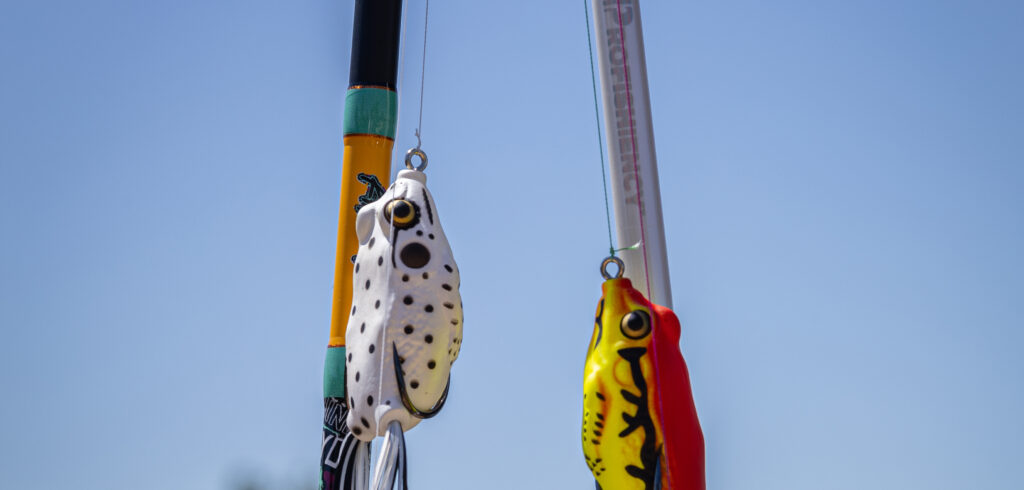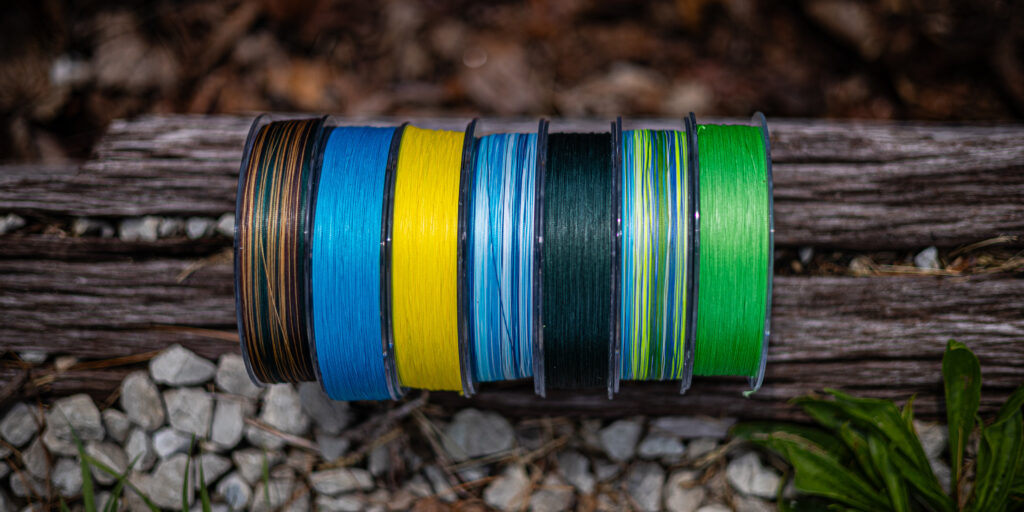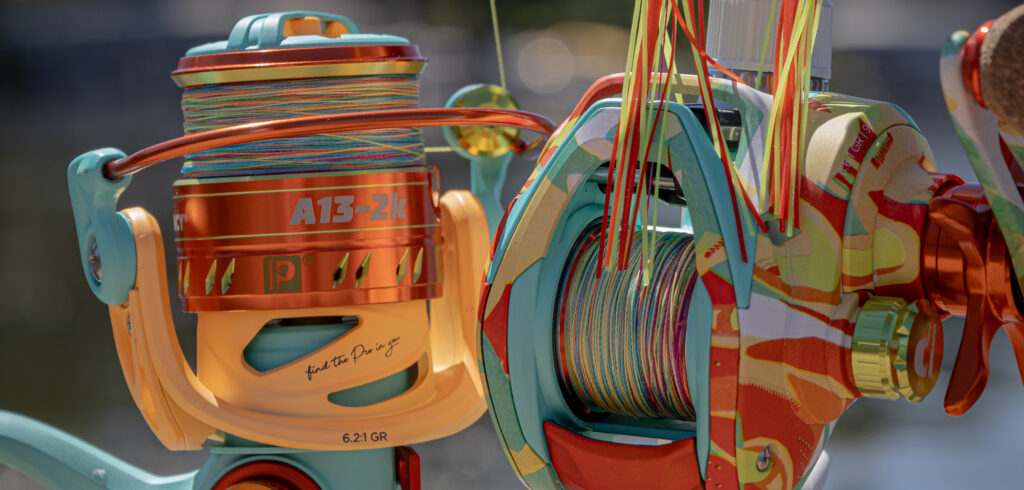Braided line has become a go-to choice for many anglers thanks to its strength, thin diameter, and sensitivity. But one common question remains: what pound test braid should you use? The answer depends on the fish you’re targeting, the technique you’re using, and the gear you’re fishing with.
Here’s a breakdown to help you pick the right pound test for your next trip.

Why Pound Test Matters
Unlike monofilament or fluorocarbon, braid is much thinner for the same strength. For example, 30 lb braid has the diameter of roughly 8 lb mono. That means you can spool heavier line without sacrificing casting distance or capacity.
Choosing the right pound test ensures:
- Enough strength to handle the fish you’re targeting.
- Proper casting performance for your technique.
- Balanced performance with your rod and reel.
General Guidelines by Target Species
- Panfish & Trout: 6–10 lb braid (thin diameter, finesse-friendly).
- Bass: 20–50 lb braid depending on technique and cover.
- Walleye: 10–20 lb braid for jigging, trolling, or live bait.
- Pike & Musky: 50–80 lb braid for strength and shock resistance.
- Inshore Saltwater (Redfish, Snook, Speckled Trout): 20–40 lb braid.
- Offshore Saltwater (Tuna, Grouper, Mahi): 50–100+ lb braid.
Technique-Specific Pound Test Recommendations
- Finesse Fishing (drop shots, shaky heads, Ned rigs): 10–15 lb braid with a fluorocarbon leader.
- Crankbaits & Reaction Baits: 20–30 lb braid, often with a leader for abrasion resistance.
- Flipping & Pitching into Heavy Cover: 50–65 lb braid for pulling fish out of mats and timber.
- Frogging & Topwater in Grass: 50–65 lb braid for no-stretch hooksets and strength in vegetation.
- Swimbaits or Big Baits: 65–80 lb braid to handle heavy lures and strong fish.
- Saltwater Jigging & Popping: 50–100 lb braid depending on species size.
Matching Braid to Your Gear
- Rod Power & Action: A medium-light spinning rod pairs well with 10–15 lb braid, while heavy flipping sticks are designed for 50–65 lb braid.
- Reel Size: Smaller spinning reels work best with lighter braid (10–20 lb), while baitcasters can handle heavier line (30–80 lb).
- Leader Use: If you’re fishing clear water, pair braid with an appropriate fluorocarbon or mono leader to match the conditions.

Frequently Asked Questions
Q: Can I use heavy braid (like 50 lb) for all fishing?
A: You could, but it’s not ideal. Heavy braid may reduce casting distance on lighter setups and overwhelm finesse techniques. Match braid to your target fish and gear.
Q: Is light braid more likely to break?
A: Not necessarily. Even 10 lb braid is very strong for its size. Breakage usually happens from abrasion or poorly tied knots, not from the line’s rating.
Q: What’s the most common pound test for bass fishing?
A: 30–50 lb braid is most common. Anglers go lighter (20 lb) for finesse spinning setups and heavier (65 lb) for frogging or flipping.
Q: Do I need to match braid pound test to mono/fluoro pound test?
A: No. Since braid is much thinner, 30 lb braid is closer in diameter to 8 lb mono. Focus on strength and application, not direct pound-for-pound matching.
Q: Can braid damage my rod guides?
A: Modern rods are built to handle braid. Damage is rare unless you’re using very rough or old braid on cheap guides.
Q: Should I always use a leader with braid?
A: Not always. Use a leader in clear water or when targeting line-shy species. Straight braid works great in heavy cover or murky water.
- Click here to buy: Braided Fishing Line
- Click here to buy: Monofilament Fishing Line
- Click here to buy: Fluorocarbon Fishing Line
- Click here to buy: Tackle Bags
